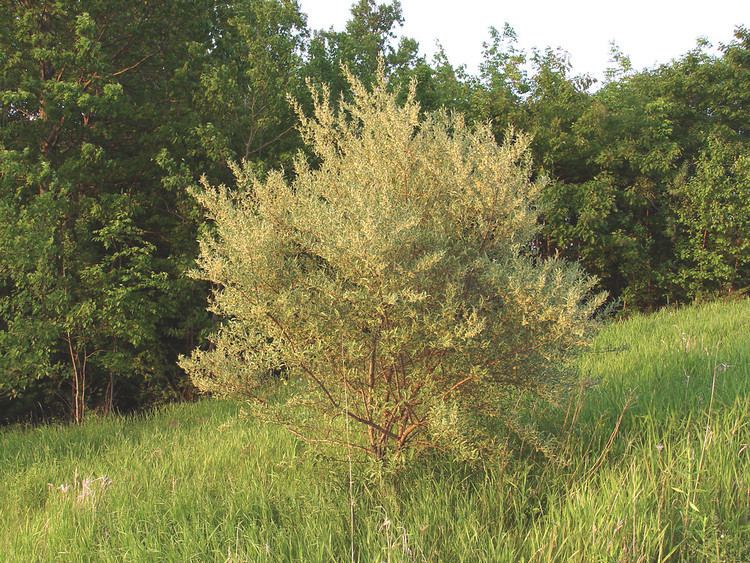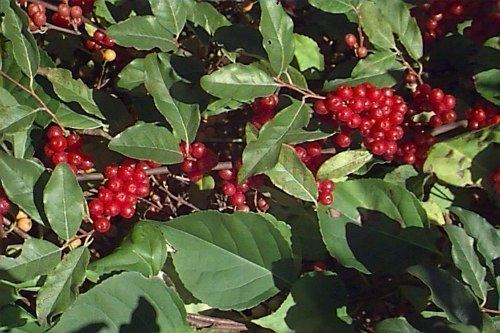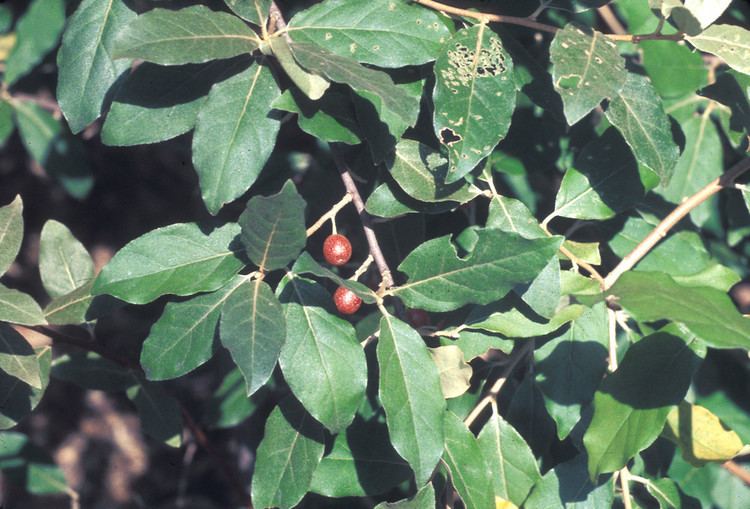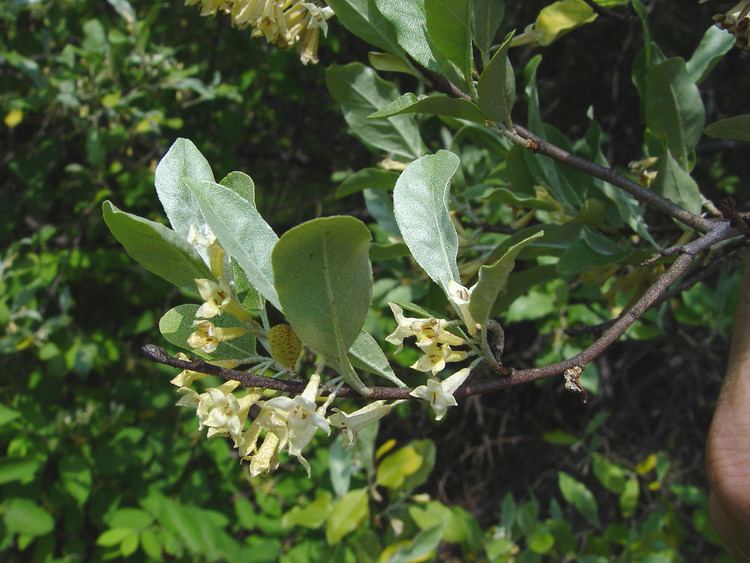Higher classification Silverberry | Genus Elaeagnus Rank Species | |
 | ||
Similar Silverberry, Elaeagnus multiflora, Elaeagnaceae, Elaeagnus pungens, Russian Olive | ||
Autumn olive elaeagnus umbellata inside out berries
Elaeagnus umbellata is known as Japanese silverberry, umbellata oleaster, autumn olive, autumn elaeagnus, or spreading oleaster. The species is indigenous to eastern Asia and ranges from the Himalayas eastwards to Japan. Because it fixes atmospheric nitrogen in its roots, it often grows vigorously and competitively in infertile soils.
Contents
- Autumn olive elaeagnus umbellata inside out berries
- Elaeagnus umbellata
- Description
- Flowers
- Fruit
- Naturalization and invasiveness
- References

Elaeagnus umbellata
Description

Elaeagnus umbellata grows as a deciduous shrub or small tree, typically up to 3.5 m tall, with a dense crown. It commonly bears sharp thorns in the form of spur branches. The leaves are alternate, 4–10 cm long and 2–4 cm wide, entire, but with wavy margins. The leaves are covered with minute silvery scales when they emerge early in spring, but turn greener above as the scales wear off during the summer. In this the plant differs from the related E. angustifolia, which remains silvery until it sheds its leaves in the fall.
Flowers

The flowers are borne in the leaf axils in clusters of 1-7. They are pale yellowish-white, fragrant, (often heavily fragrant) and have a four-lobed corolla 1 cm long. The fruit is a small round drupe 1/4 to 1/3 inches (0.65 to 0.85 cm) in diameter. The unripe fruit is silvery-scaled and yellow. It ripens to red, dotted with silver or brown.
Fruit

When ripe, the fruit is juicy and edible, and also makes a good dried fruit. Though the fruit are small, the tree bears them abundantly. They are tart-tasting, with chewable seeds. Their content of the carotenoid, lycopene, is some seven to seventeen times higher than that of tomatoes.
Naturalization and invasiveness

In some parts of North America where it has become naturalized, Elaeagnus umbellata is considered an invasive species. It is considered a "prohibited noxious weed" under the Alberta Weed Control Act 2010. In Great Britain, it does not seem to be invasive: it was introduced to Britain in 1829 and the first wild occurrence was noted almost 150 years later in 1971.
